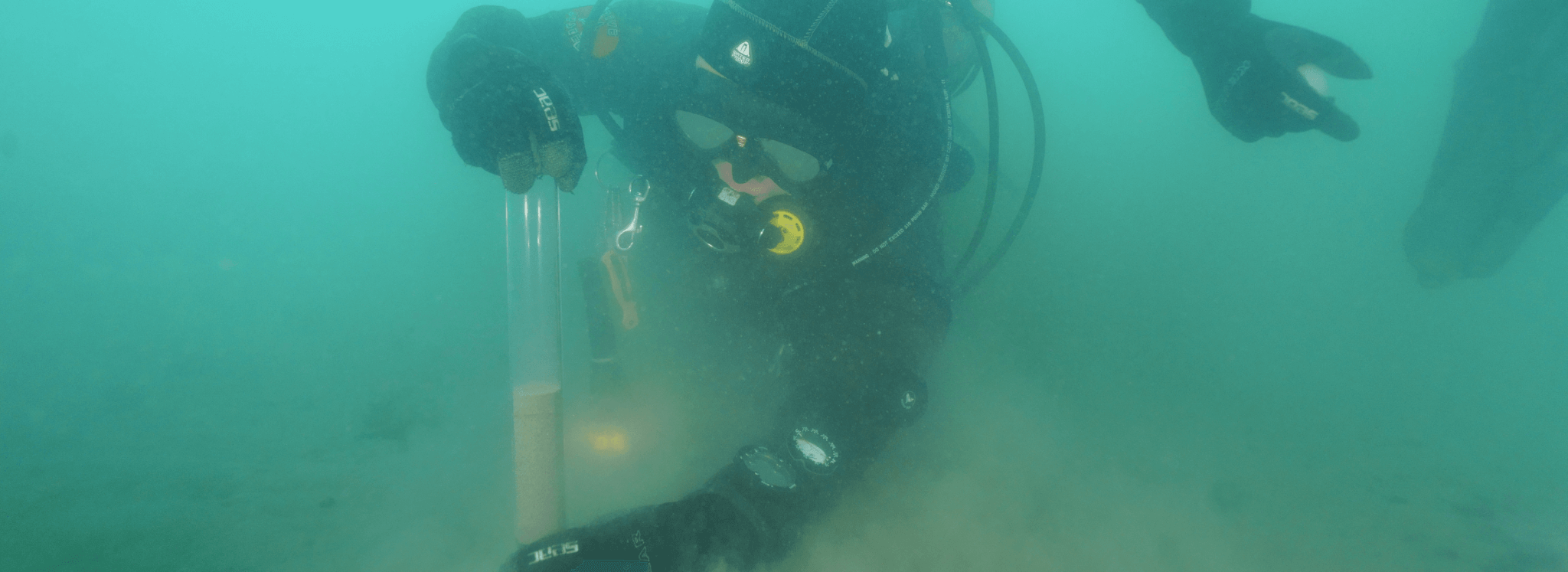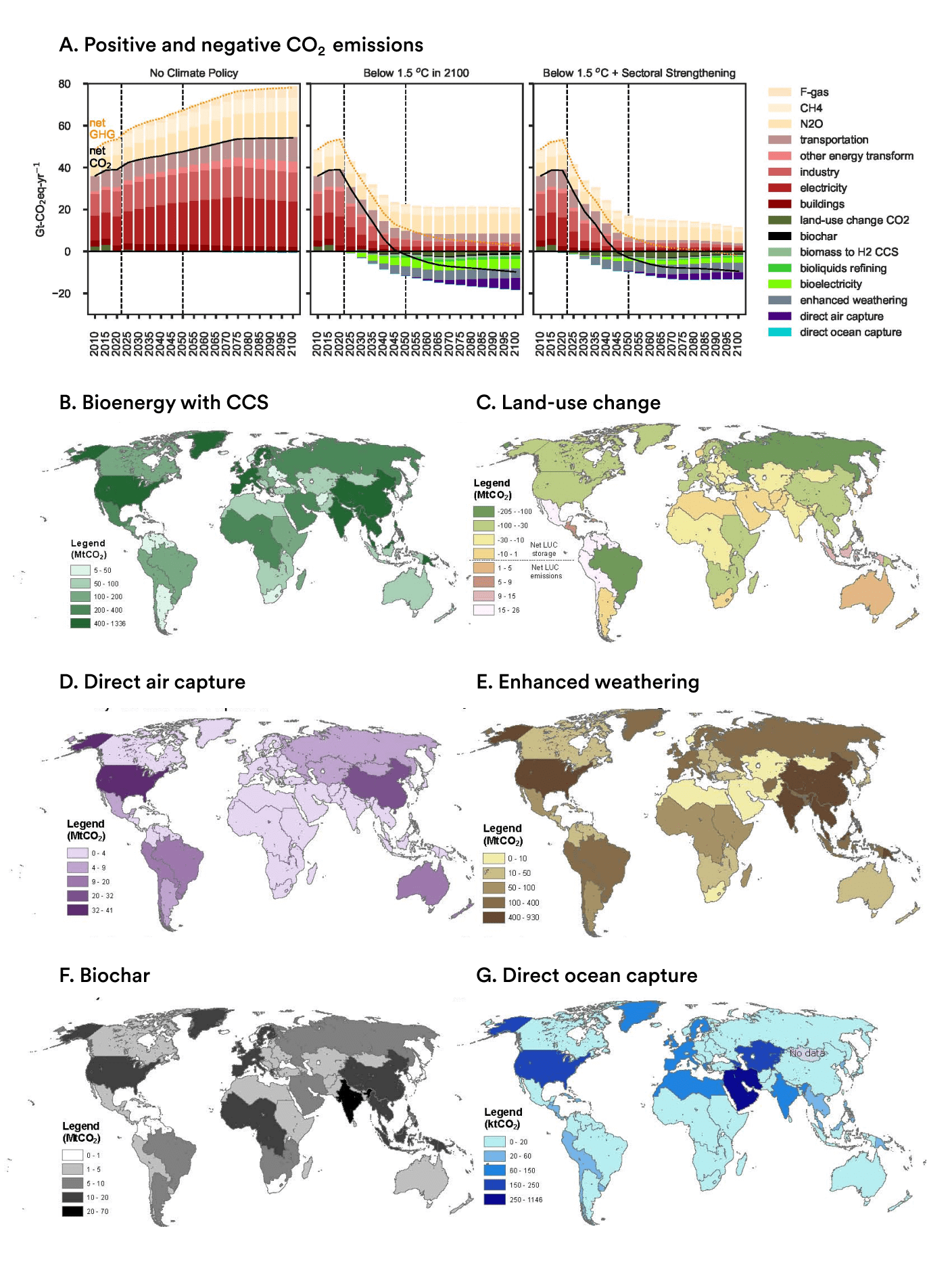
Harmful carbon dioxide emissions can remain in the atmosphere for centuries. Along with cutting new greenhouse emissions, scientists say it is crucial that we remove this historical CO2 from the air and oceans in order to restore our climate. This natural or technological process of filtering excess carbon dioxide pollution out of the air and finding sustainable methods of storing carbon is called carbon dioxide removal (CDR). Although the public understanding of CDR is often limited and a few key technologies like direct air capture are the most well-known, there are a variety of different CDR approaches that can be used to effectively address the climate crisis.
The IPCC has deemed CDR essential to limiting global warming to below 1.5° C. This means that we not only need to bring emissions to zero, but also to remove historic emissions already in the air and ocean. As a relatively new climate action space, the interactions of different CDR approaches with land, water, and energy vary based on the approach. For some CDR approaches (like restoring or protecting forests), the impact is well understood and known. For other newer technologies under development, the interactions are not as well understood. Moreover, we also must explore how CDR approaches complement a fuller portfolio of mitigation actions.
A new study conducted by the Pacific Northwest National Laboratory and co-developed with ClimateWorks, published in Nature Climate Change, addresses these knowledge gaps by incorporating the latest science and a fuller portfolio of CDR approaches into integrated assessment modeling. The study expands the portfolio of CDR options beyond bioenergy with carbon capture and storage (BECCS) and land-based CDR approaches (e.g., reforestation) referred to simply as land-use change (LUC). The portfolio of approaches now includes direct air capture with carbon storage (DACCS), enhanced weathering (EW), biochar, and direct ocean capture with carbon storage (DOCCS).
The study provides further clarity on 1) whether the 1.5°C climate goal is achievable without CDR by maximizing ambitious mitigation actions; 2) the function of a suite of CDR approaches within climate action; and 3) how a diverse set of CDR options interacts with land, water, and energy considerations. To accomplish this, we incorporate this fuller portfolio of CDR options and provide multiple pathways that differentiate the levels of use, thus revealing tradeoff considerations.
Approximately 10 gigatons of CO2 (GtCO2) removal per year might be needed globally, even with deep technology and behavioral changes such as rapid electrification, higher material efficiency, and lower population growth. Despite such concerted efforts, residual emissions remain stubbornly high. More than 60% of these residual emissions necessitating CDR came from non-CO2 greenhouse gasses that are prohibitively difficult or impossible to mitigate. Essentially, marginal gains in climate action will require proportionally larger and more fundamental efforts.
Early action in emissions reduction and scaling up a balanced portfolio of CDR approaches will help reduce cumulative removal needs and limit potentially unfavorable tradeoffs between resources. By introducing new CDR options, this study demonstrates an approach to place significant limits on the overuse of BECCS and afforestation — areas of concern in earlier CDR assessments, as both approaches are land-consuming, which could risk biodiversity and competition with water and food. Notably, even with limited BECCS, the water needed for irrigating bioenergy crops can remain significant at 3% of global water consumed.
Our approach of evaluating simultaneous technology and behavioral changes while also limiting the deployment of BECCS and afforestation does present a set of tradeoffs to consider. For example, by limiting the use of bioenergy, demand for other CDR options like DACCS rises. By 2050, energy requirements for technological options could make up as much as 3% of total final energy consumption depending on the region. DOCCS, as a nascent technology and with a high cost per ton today, makes up less than 1 million tons of removal but has higher potential when coupled with seawater desalination. This in particular will benefit arid regions when surface and groundwater resources become scarcer in a warming world. Biochar’s removal potential is estimated at 200 MtCO2 per year by 2050 with the largest potential in India and West Africa. Given current data, enhanced weathering (EW) might provide the most cost-effective CDR services, eliminating as much as 4 GtCO2 per year by 2050. Furthermore, EW can be distributed across diverse geographies, notably in China, the United States, India, Brazil, and the European Union.

Our findings demonstrate that a wider portfolio of CDR options could be implemented across geographies, thus reducing reliance on any single contribution. Some geographies might deploy multiple CDR options at scale — the United States and China, for example, are expected to be significant contributors. Meanwhile, other regions might specialize in particular sets of CDR options.For example, BECCS, biochar, and enhanced weathering may be particularly suited for Sub-Saharan given its geology and endowments. Such regional differences and their implications remain an important area of research as the current resource distribution in this study is not representative of conscious economic development and environmental justice choices. Since it is possible for a country’s economy to change rapidly, comparative advantages in the distribution and uptake of CDR options will look different over time. Furthermore, responsible deployment requires thoughtful collaboration with local communities while prioritizing local environmental justice concerns and goals.
Currently, many national and corporate decarbonization strategies reference CDR but lack specifics on removal methods, quantitative details, and consideration of appropriate use and tradeoffs. Further research is needed to incorporate a full range of CDR approaches, their potential impacts on energy, water, and land systems, and their deployment realities based on mitigation successes. This study takes a step in this direction by representing a framework that incorporates more options, but more information and collaboration are required to fully embed understanding and uptake of the growing list of CDR options. Philanthropy can play a critical role in addressing these knowledge gaps by supporting the responsible CDR research needed to serve important climate objectives and accelerate deep decarbonization.
